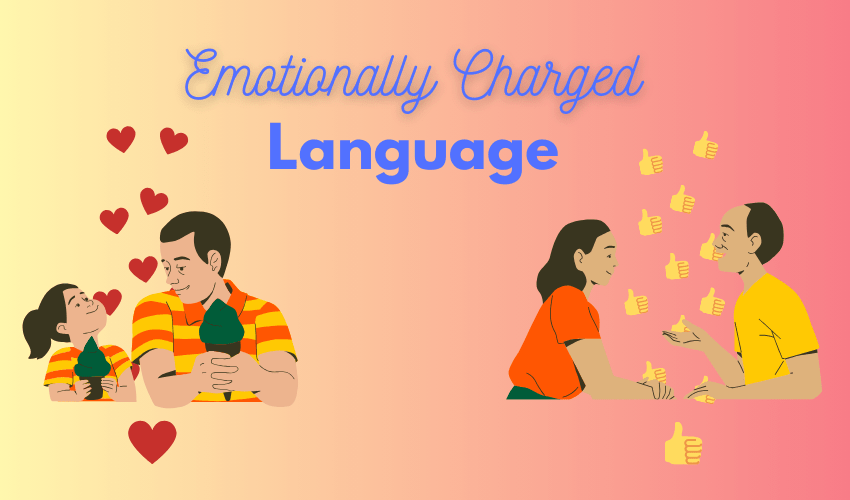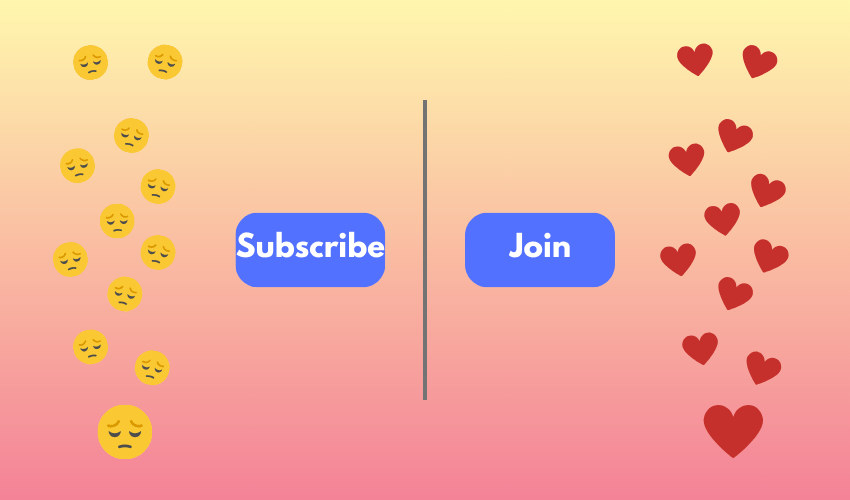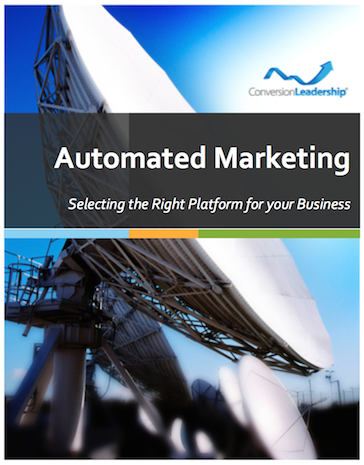Using Emotionally Charged Language in Calls to Action

In the realm of marketing and advertising, the power of language cannot be overstated. Particularly, emotionally charged words in calls to action (CTAs) which play a pivotal role in influencing consumer behaviour and decision-making. This article delves into the concept of emotionally charged language, its interplay with cognitive fluency, and its impact on effective communication in CTAs.
Why Emotionally Charge Language is Important in CTAs
What Are Emotionally Charged Words?
Emotionally charged words are those that evoke strong emotional responses. They can trigger excitement, urgency, curiosity, or even fear. Words like 'amazing', 'discover', 'exclusive', or 'urgent' fall into this category.
In CTAs, emotionally charged words are used strategically to grab attention and prompt immediate action. Here are 20 examples of emotionally charged words and how they can be used in a CTA:
- Transform - "Transform your life today with our proven fitness program!"
- Discover - "Discover the secrets to a healthier lifestyle on our blog."
- Unlock - "Unlock your potential with our advanced online courses."
- Exclusive - "Get exclusive access to premium features by signing up now!"
- Revolutionary - "Join the revolutionary movement towards sustainable living."
- Empower - "Empower yourself with knowledge – attend our free webinar!"
- Instant - "Get instant results when you try our rapid skincare solution."
- Hurry - "Hurry, limited seats available for our special workshop!"
- Unleash - "Unleash your creativity with our innovative design tools."
- Win - "Win a chance to travel the world – enter our contest today!"
- Innovate - "Innovate your business strategies with our cutting-edge software."
- Soar - "Soar to new heights in your career with our mentorship program."
- Conquer - "Conquer your fears and start your adventure with us!"
- Ignite - "Ignite your passion for cooking with our exclusive recipe book."
- Escape - "Escape into a world of mystery with our latest book series."
- Guarantee - "Guarantee your success with our proven investment plan."
- Boost - "Boost your productivity with our time-management tool."
- Challenge - "Challenge yourself to a new fitness goal with our app."
- Enhance - "Enhance your digital skills with our free online courses."
- Save - "Save more on your next purchase with our exclusive discount code."
Understanding Cognitive Fluency
Cognitive fluency refers to the ease with which our brain processes information. It plays a crucial role in how we perceive and respond to communication. Simple, clear, and familiar language leads to higher cognitive fluency, making the message more persuasive and easier to accept.
Influence of Cognitive Fluency on Decision-Making
Cognitive fluency affects decision-making by making certain choices feel more 'right' or comfortable. In the context of CTAs, a message that combines cognitive fluency with emotional triggers is more effective in persuading consumers to take action.
However, the effectiveness of commonly found cognitive fluency and emotional trigger words in CTAs can vary, and their familiarity is a double-edged sword. On one hand, familiarity can enhance effectiveness; on the other, overuse can lead to diminished impact.
Advantages of Familiarity
- Ease of Understanding: Familiar phrases or structures in CTAs leverage cognitive fluency, making them easy to understand. This ease can increase the likelihood of the audience taking the desired action.
- Quick Recognition: Familiar triggers are quickly recognized and processed by the audience. In environments where consumers are inundated with information, such as online advertising, this rapid recognition can be advantageous.
- Established Emotional Connection: Familiar emotional triggers can immediately evoke the desired emotional response because the audience already associates certain words or phrases with specific actions or feelings.
Disadvantages of Overuse
- Desensitization: Overuse of the same triggers or phrases can lead to desensitization. When consumers encounter similar CTAs repeatedly, they may become less responsive to them.
- Lack of Differentiation: If a CTA sounds too similar to numerous others, it can fail to stand out. This lack of differentiation can make it less effective in a crowded and competitive market.
- Predictability: Predictable CTAs might fail to spark interest or excitement. Innovation and creativity in messaging can often be more engaging.
Striking the Right Balance
To maintain the effectiveness of CTAs with familiar cognitive fluency and emotional triggers, marketers should strive to strike a balance:
- Personalization and Contextualization: Tailoring CTAs to the audience’s specific interests or the context of the message can rejuvenate familiar phrases, making them more relevant and engaging.
- Example 1: For Health-Conscious Young Adults
- Original CTA: "Join our fitness program today and get in shape!"
- Personalized & Contextualized CTA: "Hey Urban Millennials! Get ready for summer with our 30-Day Fitness Challenge. Feel confident and energized – Start your journey today!"
- Cognitive Fluency: Simple, direct language.
- Emotional Triggers: "Feel confident and energized" targets the desire for self-improvement and confidence, common in young adults.
- Example 2: For Busy Working Parents
- Original CTA: "Try our new meal delivery service."
- Personalized & Contextualized CTA: "Busy parents, rejoice! Healthy family dinners, sorted. Our quick meal delivery service fits your hectic schedule. Enjoy more family time – Order now!"
- Cognitive Fluency: Clear, easy-to-understand message.
- Emotional Triggers: "Enjoy more family time" taps into the desire for quality family interactions, a priority for working parents.
- Example 3: For Avid Gardeners in Urban Areas
- Original CTA: "Check out our gardening supplies."
- Personalized & Contextualized CTA: "Urban Gardeners, transform your balcony into a green oasis! Our compact gardening kits are perfect for small spaces. Grow your garden dream with us – Shop now!"
- Cognitive Fluency: Straightforward and relatable message.
- Emotional Triggers: "Transform your balcony into a green oasis" appeals to the specific aspirations of urban gardeners looking to maximize limited space.
- Example 1: For Health-Conscious Young Adults
- Combining Familiarity with Creativity: Mixing familiar triggers with creative elements can capture attention while still leveraging the benefits of cognitive ease and emotional connection.
- Example 1: For a Travel Agency
- Original CTA: "Book your dream vacation now!"
- Creative & Enhanced CTA: "Embark on a journey to the unknown. Book now and find the secret beach that's not on the map!"
- Familiar Emotional Trigger: The excitement and allure of a dream vacation.
- Unexpected Creative Element: The mystery of an uncharted beach adds intrigue and stirs the imagination, appealing to the adventurer in everyone.
- Example 2: For a Fitness App
- Original CTA: "Join our fitness community today!"
- Creative & Enhanced CTA: "Join our fitness rebellion! Be more than fit, be a trailblazer. Start your journey to fitness revolution today!"
- Familiar Emotional Trigger: The motivation and community aspect of fitness.
- Unexpected Creative Element: Framing the fitness journey as a 'rebellion' and the user as a 'trailblazer' introduces an empowering, unconventional twist.
- Example 3: For an Online Learning Platform
- Original CTA: "Expand your knowledge – enroll in our courses."
- Creative & Enhanced CTA: "Turn your curiosity into superpowers. Enroll now and become the hero of your career story!"
- Familiar Emotional Trigger: The desire for self-improvement and learning.
- Unexpected Creative Element: Positioning learning as a way to gain 'superpowers' and become a 'hero' adds a playful, inspiring spin to the idea of career advancement.
- Example 1: For a Travel Agency
- Testing and Optimization: Regularly testing different versions of CTAs will provide insights into what resonates best with the audience, allowing for ongoing optimization.

Communicating with Emotional CTAs to Drive Conversions
Communication, especially in marketing, often aims to evoke emotions. Emotions are powerful drivers of behaviour; they can create a sense of connection, urgency, or desire that rational arguments alone may not achieve. This emotional engagement is crucial in prompting consumers to make purchases or engage with a brand.
Types of Emotional Responses
Emotional responses can be broadly categorized into positive and negative emotions. Positive emotions like happiness, excitement, or curiosity can create an optimistic association with a brand or product. Conversely, negative emotions like fear or urgency can motivate action to avoid loss or negative outcomes.
Utilizing Positive Emotionally Charged Language in CTAs
Positively charged words often create a sense of excitement or opportunity. A call to action that successfully creates a positive emotional response can significantly amplify its effectiveness, primarily because emotions are powerful motivators in human behaviour.
Phrases like 'unlock your potential', 'transform your life', or 'discover new horizons' can inspire and motivate people to engage through the emotional response they trigger.
When a CTA elicits feelings such as joy, excitement, or optimism, it not only captures attention more effectively but also fosters a deeper connection between the audience and the message. This positive emotional engagement encourages the audience to act, as they associate the good feelings with the action suggested.
For instance, a CTA that makes a user feel inspired or hopeful about potential outcomes (like "Start your journey towards a happier, healthier you today!") can lead to higher conversion rates, as people are more inclined to respond to messages that make them feel good.
A positively framed CTA can also trigger word-of-mouth marketing, as people are more likely to share content that evokes positive feelings. Which makes using positive emotional triggers in CTAs a highly effective strategy for boosting engagement, loyalty, and overall marketing success.
Incorporating Negatively Charged Words in CTAs
While negative emotions might seem undesirable, they can be effective in CTAs when used correctly.
A CTA that invokes a negative emotional response can be effective by tapping into a sense of urgency or fear of missing out (FOMO).
When a CTA leverages emotions like concern, anxiety, or a sense of urgency, it can motivate people to act swiftly to avoid negative outcomes.
For example, a CTA like "Don't miss out on this limited-time offer" or "Act now before it's too late" plays on the fear of missing a beneficial opportunity, which can be a powerful motivator. This strategy can lead to quick decision-making and immediate action, as people are often driven to alleviate negative feelings or prevent undesirable scenarios.
In certain contexts, such as security services or health campaigns, highlighting potential risks or negative consequences can be a necessary and effective approach to encourage proactive measures. However, it's crucial to balance such tactics with ethical considerations and not to overly rely on fear or negative emotions, as this can backfire and create a negative brand perception.
Strategically used, negative emotional triggers in CTAs can create a sense of urgency and prompt decisive action, but they must be employed judiciously to avoid adverse effects.
Using Language to Elicit Specific Emotional Responses
The language used in CTAs can be tailored to elicit specific emotional responses. For instance, using words like 'win', 'success', or 'happiness' can evoke positive emotions, while words like 'hurry', 'last chance', or 'risk-free' can invoke a sense of urgency or relieve anxiety.
The following words, evoking strong sentiments. They can be used in various contexts to trigger intense emotional responses, ranging from extreme joy and elation to deep fear and sadness.
Positive Emotions
- Joy
- Love
- Triumph
- Freedom
- Peace
- Hope
- Success
- Victory
- Bliss
- Euphoria
- Ecstasy
- Amazed
- Inspired
- Marvel
- Serenity
- Jubilation
- Enlightenment
- Empowerment
- Exhilaration
- Radiant
- Thrilled
- Celebrate
- Adore
- Passion
- Delight
- Prosperity
- Harmony
- Dream
- Hero
- Miracle
- Majesty
- Fascinate
- Adventure
- Wonderland
- Treasure
- Paradise
- Sparkle
- Enchant
- Cheer
- Majestic
- Splendor
- Bloom
- Flourish
- Glorious
- Mesmerize
- Uplift
- Breathtaking
- Exquisite
- Elated
- Grace
Negative Emotions
- Fear
- Hate
- Anguish
- Despair
- Betrayal
- Tragedy
- Horror
- Scorn
- Agony
- Terror
- Panic
- Shock
- Disgust
- Fury
- Rage
- Wrath
- Menace
- Torment
- Desolate
- Destroy
- Catastrophe
- Plague
- Venom
- Vengeance
- Revenge
- Savage
- Chaos
- Cruel
- Wretched
- Brutal
- Abandon
- Curse
- Doom
- Dread
- Scream
- Haunt
- Nightmare
- Poison
- Sinister
- Shatter
- Bleak
- Grim
- Frighten
- Hell
- Mourning
- Meltdown
- Sorrow
- Forsaken
- Lament
- Decay
A Step-by-Step for Writing Emotionally Charged CTAs
The most effective CTAs often combine emotionally charged words with high cognitive fluency and principals of persuasion. Writing a call to action that effectively combines all these things involves 6 key steps.
Step 1: Define Your Outcome Objective
- Identify the Action: Determine precisely what action you want your audience to take. Is it to subscribe, purchase, register, download, or something else?
- Understand Your Audience: Know who you are addressing. What motivates them? What are their desires or fears?
Step 2: Choose Emotionally Charged Language
- Select Emotive Words: Based on your audience's motivations, choose words that evoke the desired emotions needed to achieve your outcome. For a positive emotional response, words like 'joy', 'discover', 'success' can be effective. For urgency, consider 'hurry', 'limited', 'now'.
- Create a Connection: Use language that resonates personally with the audience, making the message feel tailored to their needs and emotions.
Step 3: Ensure Cognitive Fluency
- Keep it Simple: Use clear, straightforward language. Avoid jargon or complex phrases.
- Be Concise: Make your CTA short and to the point. It should be immediately understandable.
- Logical Flow: Ensure the CTA logically follows from the content preceding it. The transition should feel natural.
Step 4: Apply Principles of Persuasion
- Reciprocity: Suggest that the audience will gain something valuable from taking the action.
- Scarcity: If applicable, imply that the opportunity is limited, either by time or availability.
- Authority: Demonstrate expertise or trustworthiness in your messaging.
- Consistency: Align your CTA with the audience's self-image or past behaviors.
- Liking: Make the CTA outcome that is likable and relatable for your audience.
- Social Proof: Use elements of social proof if available (using verbs like 'join' and precise numbers to evidence your social credentials, etc.).
Step 5: Write and Refine Your CTA
- Draft the CTA: Combine your emotionally charged words, cognitive fluency, and persuasion principles into a draft.
- Example: "Join 10,000+ happy learners and unlock your potential today - Register now and start your journey to success!"
- Refine and Test: Review your CTA for clarity and impact. Test different versions if possible to see which resonates best with your audience.
Step 6: Integrate Visually
- Visual Compatibility: Ensure the CTA stands out visually (use colour, size, placement and attention grabbing elements) while still being harmonious with the overall design.
- Accessibility: Make sure the CTA is accessible, with legible fonts and mobile-friendly design.
Use Calls to Action with Emotionally Charged Language
Emotionally charged language, when combined with cognitive fluency, significantly enhances the effectiveness of CTAs. By carefully choosing words that evoke the desired emotional response and presenting them in a simple, clear manner, businesses can greatly influence consumer behaviour and decision-making, ultimately driving commercial success.
Remember, the key is to resonate emotionally in the most appropriate way for your target audience.

